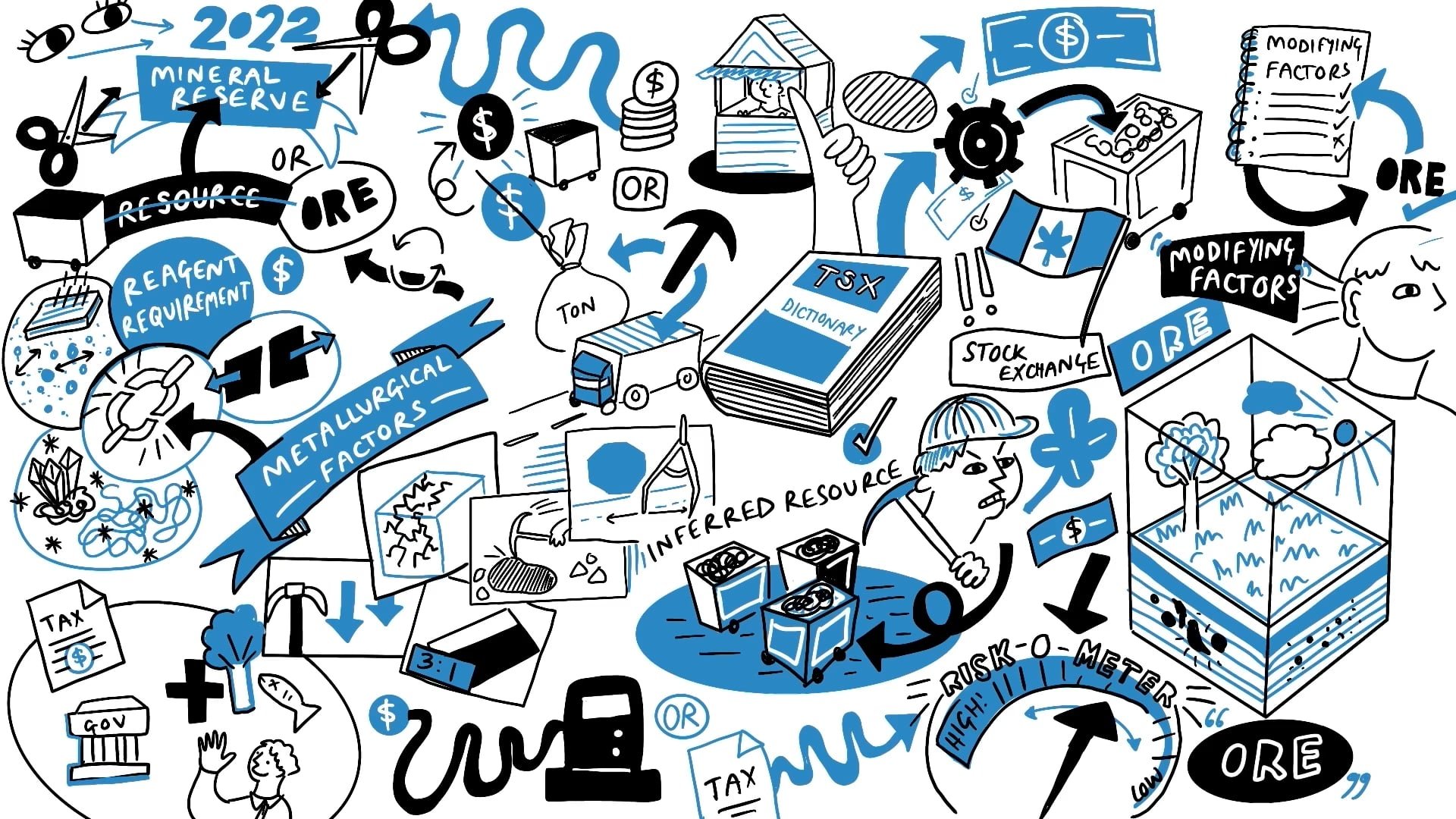Commodity: Major Miners and Major and Minor Metals

More episodes
Transcript
The big boys in this industry are the diversified mining companies. And to attract their attention with an asset, you've got to think, well, how is it going to be material to them? These are companies with market capitalizations of between 50 and 120 billion dollars.
And remember that most of these conglomerates have significant coal or oil and gas divisions in one case, which are distinctly out of favour among enlightened investors. Rio Tinto flicked out its coal assets in 2018, beating Anglo-American to the punch by about three years, which divested its coal business into Thungela Resources in June of this year. Glencore, as usual, is taking the brass neck approach and has decided to run down its coal assets, putting them into harvest mode and just taking the dividends. The biggest company of the lot, BHP, has seen its new CEO, Mike Henry, who joined in February 2020, immediately announced plans to decarbonize its production profile by targeting oil and coal as their areas for reduction. Given that BHP is about 13% oil and 21% coal by revenue or value, and that iron ore is about 40%, it leaves, doing the maths, 27% from base metals and others. Within that 27% base metals division, copper contributes to the total about 24% to the group and nickel about 3%. So even though the supply demand fundamentals for nickel may be better than for copper, and even though BHP feels that demand for nickel in batteries, for example, will grow 500% in the next decade, copper will still dominate the conversation about how to replace that 34% of value in the company that's going to be taken out. So they've got to grow. So for BHP to shrink one of their major sectors, hydrocarbons, which is, as I said, 34% of the revenue of the company or the value of the business, it's quite a thing for them to then replace that with base metals. It's much easier for them to really focus on the big projects or on the big commodities. Something like copper, which is a 21 million tonne per annum market. And they've got a much better chance of recouping the value that they're going to cut off themselves by growing a copper project to be a major stake or a major contributor or continue to be a larger contributor within the makeup of BHP than it is for something like nickel. I mean, how do you grow a 3% position to be relevant when you've got a 34% position to fill, you know, it's just so much easier in the bigger metal, the bigger market. Now the point of all of this discussion is to come back to the fact that it really matters which commodity your company is chasing. For me, copper, nickel are no-brainers we like. They are traded on liquid, terminal markets with clear pricing structure. And we know from what the major mining companies are doing strategically that there is therefore a strategic premium that will be attributed to good copper and nickel assets. They don't even need to be the next giant or supergiant deposit. Rio Tinto, for example, has now sussed out that off-the-scale deposits come with off-the-scale permitting hassles and that smaller projects can offer better returns in better timeframes.
Rio Tinto now includes metrics in its analysis for a project as minimal economic value. So they are looking at minimal target size. They're looking for projects that they can get into production and work and grow from there.
Then it's worth looking at the bigger volume markets or commodities which are traded in bigger volumes than copper, as I said, to 21 million tonnes per annum. So you look at iron ore or coal, and here the market is dominated by the majors. Whether that's the listed Western companies such as Vale, BHP, Rio, Anglo-American, or the unlisted or parastatal
companies. I'm thinking of the Chinese or, or indeed Trafigura. Either way, if you're a junior company or a single asset producing or targeting company, your pricing power is vastly reduced relative to the big guys. And the barriers to entry are enormous and therefore it's extremely dangerous to go into an investment in one of these kinds of companies thinking, oh, we've got this price cycle that's going to go up. The iron ore price may go up, the coal price may go up, but it's going to be really hard for you to monetize an asset because you don't have the pricing power.
So, either way your pricing power is vastly reduced and the barriers to entry are enormous and therefore it's extremely dangerous to go into it thinking, oh we've got this price cycle that's going to go up, oh iron ore prices are going up, coal prices, and we're going to bring it into production. It's really not going to work. In the last cycle so many wannabe iron ore companies tried to jump on that bandwagon in the noughties, and only one, as far as I'm aware, of any scale made it. That's Fortescue Metals. Underestimate the barriers to entry at your peril. Some commodities are just best left for the majors, and don't even get me started on phosphates or potash with the barriers to entry. Eeuw. In short - be very careful when you're in a commodity that is contract based and with a large capex or indeed just with contract based with very difficult specifications. Favour the ones that traded on terminal markets such as the London Metal Exchange, the LME or the London Bullion Market Association, the LBMA for precious metals. It makes such a difference as you get so many more commercial and off-tick opportunities for your company.
Once you have settled on the commodity, try to avoid taking a rose-tinted view of the price action. What you actually need to know is whether the company is really going to make money or continue to make money out of the asset. The safest way to run this analysis is to understand the cost curve of the commodity. Rather than looking at the metal price moves driven by demand, it's important for investors to have a grasp of the production constraints of the commodity that you're looking at.
Remember that if you're going to invest in a metal, you're emotionally invested in it, your basic approach, presumably, is that you're going to assume that demand is strong. We all know the narrative. We're going towards a higher tech, a richer future, which is needed to alleviate poverty. And as we go from seven billion people to nine billion people, we're going to need to use more raw materials. So whether it's for energy or for transport or for just basic modernity, the demand profile for raw materials is trending up.
That's all well and good. But in addition, we needed to understand as an investor, the other supply constraints, the typical timelines to productions and an understanding of any excess supply that's going to come in to really understand what that probable shape of the cost curve is going to be. What are the new projects going to do? What's the impact on the market of those new projects? It comes back to wanting to be in a bigger, larger market than being a smaller one. For example, a new project coming into the gold market, is very unlikely to affect the price of gold. It's not going to affect the cost curve. It's not going to change the shape very much because you've got so many different producers of gold and the volume is large. And any one new project is going to be a very small percentage of that overall supply. However, if you pick a material like barite, which is a few tens of thousands of tons per annum.
If you've got a new barite production stream that comes on, I don't know, something like Adriatic Metals that might produce barite as a price insensitive byproduct, it may well change the supply cost curve. And that's the important thing to bear in mind. Your new project, is it going to make too big a splash in the market that you're dealing with?
I come back to gold. There is a reason why there are so many gold companies. There is a reason why gold companies are the preferred choice of mining executives to get going. And it's this. They are much, much easier than almost any other kind of company to run and to develop successfully. The capital cost for gold is relatively low. Or for a gold project, it's low in the most case. I mean, of course you can find expensive gold projects with pressure oxidation and roasting or complicated mineral processing. But a medium sized gold project with a decent grade can have a low capital cost and it can make money. It's a very, very well known industry. It's very well known, so the money executives, the mining executives who are going about it, understand it. The engineers reviewing the projects understand it. The geologists, the mineral processes, the mining guys, everything is well known about it. There's an extremely large pool of people that know how to do gold projects, and not just that, but the market sees lots and lots of these gold companies coming through, and therefore they're easy to value. There are lots of comparisons. There's a big peer group. It's easy to see which is expensive and which is cheap. They're easy to fund because investors understand them. They're easy to benchmark. Your product is small, it's dense, it's easy to transport, it's easy to sell, it's traded on a terminal market and there are refineries who produce doorway and there are refineries globally, all who can sell it in concentrate. You've got so many options. It's a deep and liquid market.
Perhaps copper is the next step up in complexity, but there is a strong demand for the metal, falling grades, and lack of exploration historically. Again, it's a deep market, it's a big market. Again, it's well known, it's easy to value, it's relatively easy to fund. Yes, timelines are longer for copper projects typically than they are for gold projects. Timelines to develop, capex can be larger, but essentially with copper or gold or the major metals like this, the main challenge is finding them.
Once you've found them, it's a relatively vanilla process as to the development path. It's a well-worn path of development. I'm not saying it's easy, but a competent management team knows the steps to take.









































.jpg)
.jpg)
.jpg)
.jpg)



















